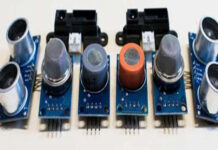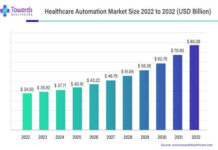System-on-Chip market was valued at USD 152.63 Billion USD in 2022 and is anticipated to reach USD 282.64 Billion USD by 2029, witnessing a CAGR of 8.39% during the forecast period 2023-2029.
Major Factors Driving the Growth of the System-on-Chip Market
One of the driving factors for the System-on-Chip Market market is anticipated to be consumers’ growing demand for smart and power-efficient devices and the widespread adoption of IoT (Internet of Things) by various industry sectors.
TRENDS INFLUENCING THE GROWTH OF THE SYSTEM-ON-CHIP MARKET
As semiconductor manufacturing technology advances, more and more transistors are being combined onto a single chip. The System-on-Chip Era has come about as a result of Integrated Circuits (ICs) being able to support more features on a single chip. All different types of electronic devices use SoC today. SoCs are used in a variety of configurations for a wide range of activities, from embedded systems to cloud computers. SoCs are hardware/software systems that combine a variety of hardware elements through an interconnect, including memories, peripherals, hardware accelerators, and analog components, with intricate software operating on the CPU. This factor is expected to drive the growth of the System-on-Chip Market.
Companies that manufacture new electric vehicles develop in technology. Traditionally dispersed electronic control units (ECUs) are being replaced by more centralized domain architectures with central computing by automakers, or OEMs. Nearly every system is supported by robust circuitry controlled by sophisticated software. The system-on-chip (SoC), which controls every element of its domain while also ensuring safety and security, is the car’s most powerful electrical component. Its development is being influenced by a number of important trends. A key factor in driving the industry is increasing vehicle range. This factor is expected to drive the growth of the System-on-Chip Market.
When integrated into an SoC chip, only one integrated circuit needs to be packed and tested, which reduces cost. Multiple integrated circuits must be packaged and tested, which is expensive. Several integrated circuits with various purposes are combined on a printed circuit board. To carry out activities, the electrical signal must travel a great distance across the printed circuit board. Both the battery usage and the processing speed have increased. Slow; when incorporated into an SoC chip, the electrical signal can be calculated by transmitting a short distance within the same integrated circuit, resulting in low power consumption and a faster computation speed. This factor is expected to drive the growth of the System-on-Chip Market.
SYSTEM-ON-CHIP MARKET SHARE ANALYSIS:
The most profitable industry is anticipated to be consumer goods. The high smartphone penetration, which is ascribed to consumer household incomes and the demand for intelligent and energy-efficient electronic devices, is what drives the system on chip’s broad range of applications. The market has consistently had a need for scalable and small ICs, which fuels the demand for systems on chips. In the near future, it is anticipated that widespread usage in numerous apps for wireless communication and signal processing will increase demand for systems on chips.
Numerous opportunities exist in the Asia Pacific region for various sectors. China is working harder than ever to develop its homegrown semiconductor sector. The Chinese tech giants have been creating their own chips, which is seen as progress toward China’s aim of strengthening its domestic capabilities.
Key Companies:
- Qualcomm Incorporated
- Toshiba Corporation
- Intel Corporation
- Samsung Electronics
- NXP Semiconductors
- Broadcom Limited
- STMicroelectronics
- Apple Inc.
- MediaTek Inc.
- Taiwan Semiconductor Manufacturing Company Limited
- Magna International Inc.














